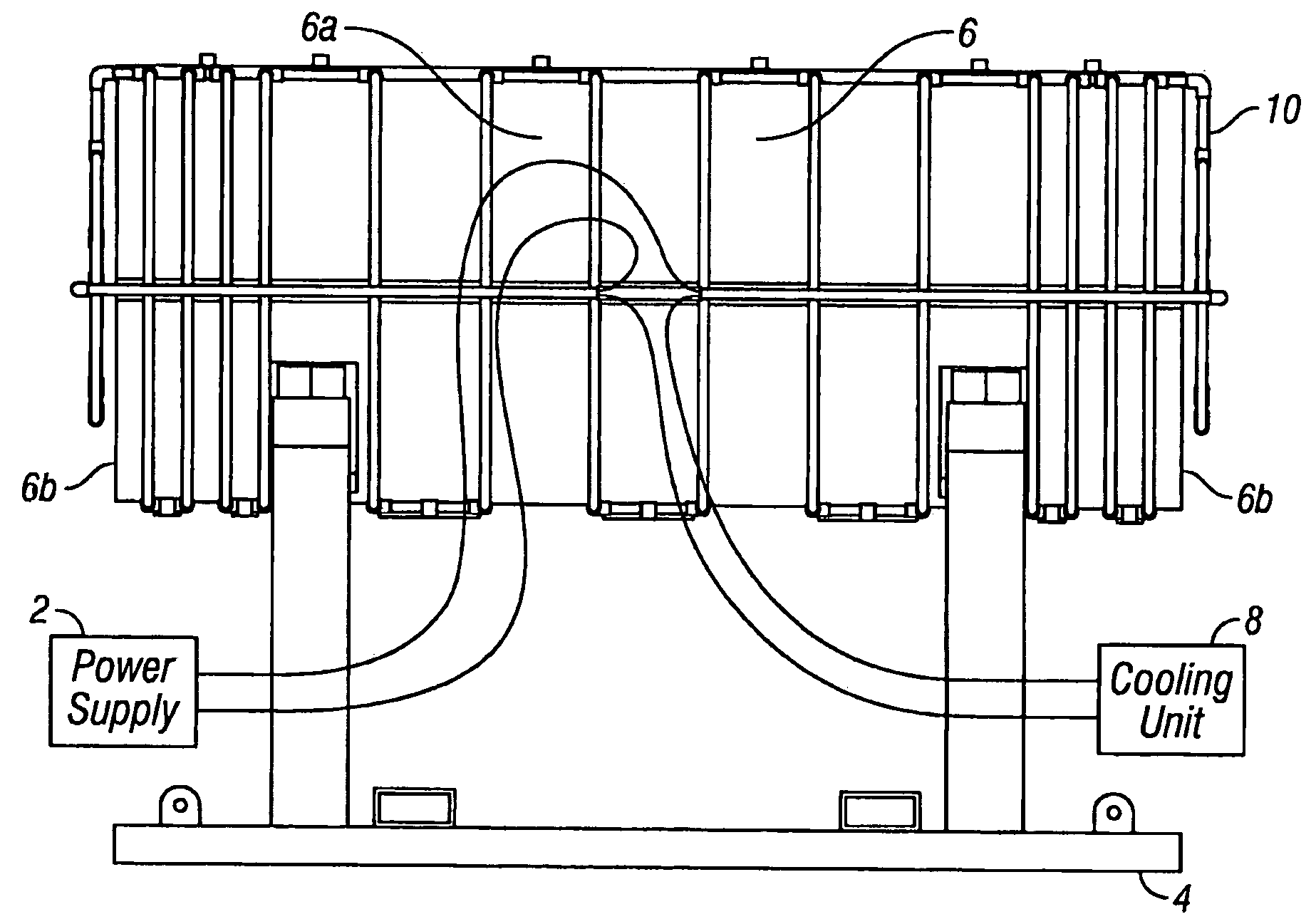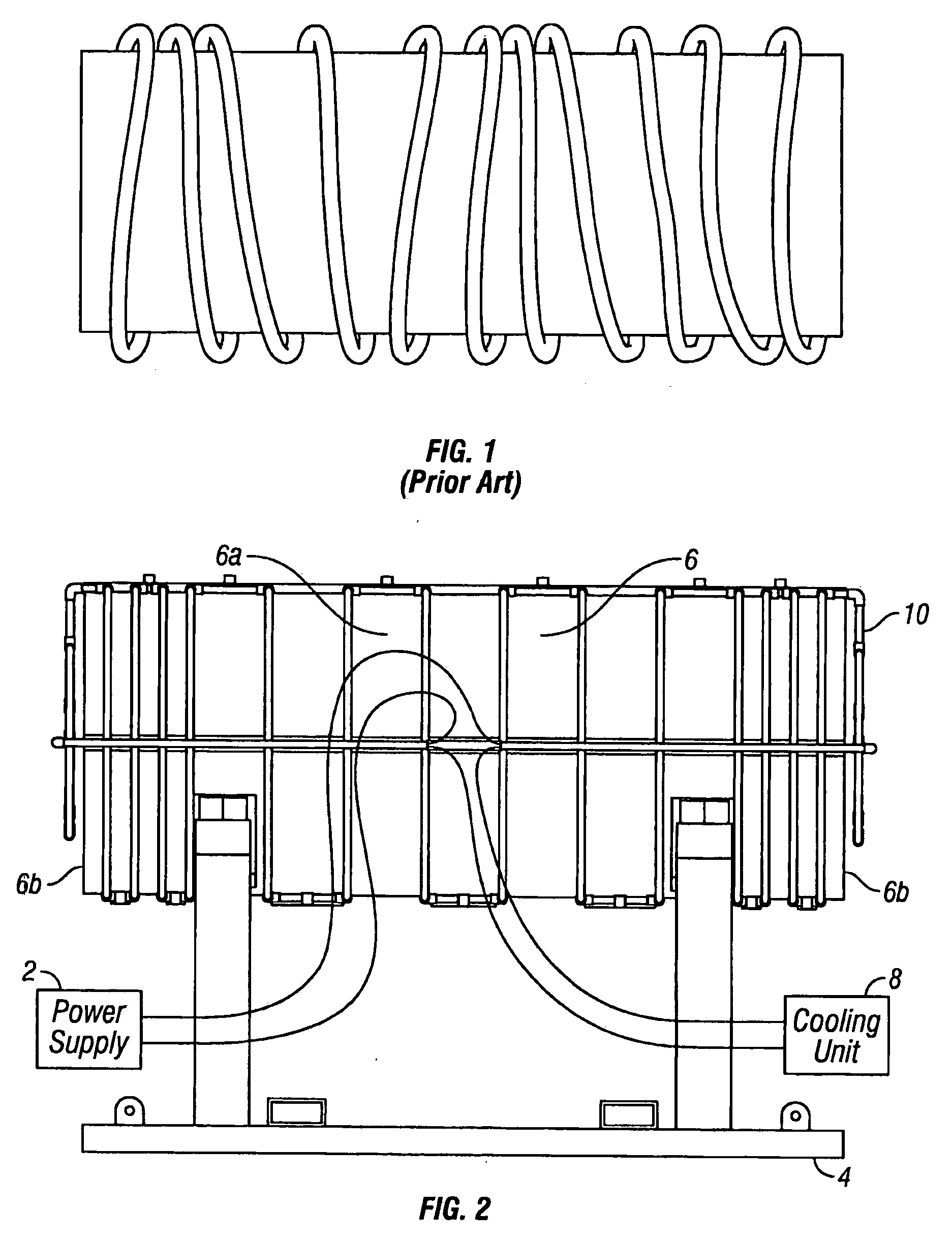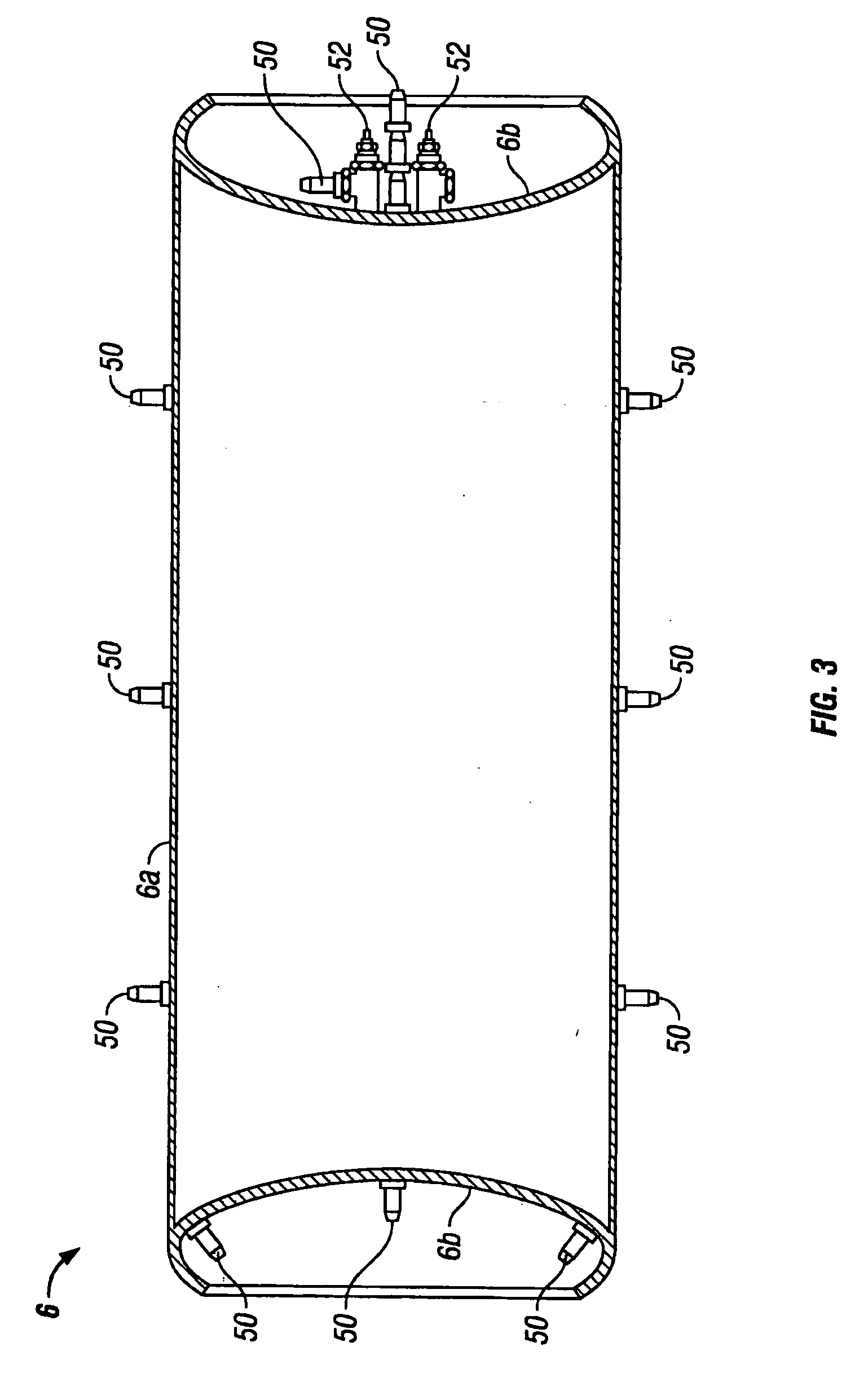Inductive heating of workpiece using coiled assemblies, system and method
a technology of inductive heating and workpiece, applied in the direction of induction current source, electric/magnetic/electromagnetic heating, disinfection, etc., can solve the problems of limited heating of small workpieces or localized areas, increasing the potential for injury during operation, and usually limited to large workpieces
- Summary
- Abstract
- Description
- Claims
- Application Information
AI Technical Summary
Problems solved by technology
Method used
Image
Examples
Embodiment Construction
[0017]Referring to FIG. 2, a preferred embodiment of the present invention is illustrated. FIG. 2 shows a power supply 2, a support cradle 4, a container 6, a cooling unit 8, and a heating coil 10. The power supply 2 supplies a high frequency alternating current to the heating coil 10, and can be any commercially available induction heating unit (for example, a portable 35-kW induction heating unit with a 60-amp, 480-VAC, 3 phase power supply). The power supply 2 induces a magnetic field around the container 6, and the output of the power supply 2 determines the speed and degree at which the container 6 can be heated. It is well known in the art that the specifications of the power supply 2 depend upon the specifications of the container 6 and the specific heating application (such as surface hardening, melting, brazing, soldering, heating to fit, and decontamination). The support cradle 4 is made to support the container 6 before, during, and / or after heating the container 6. The s...
PUM
| Property | Measurement | Unit |
|---|---|---|
| temperature | aaaaa | aaaaa |
| length | aaaaa | aaaaa |
| outer diameter | aaaaa | aaaaa |
Abstract
Description
Claims
Application Information
 Login to View More
Login to View More - R&D
- Intellectual Property
- Life Sciences
- Materials
- Tech Scout
- Unparalleled Data Quality
- Higher Quality Content
- 60% Fewer Hallucinations
Browse by: Latest US Patents, China's latest patents, Technical Efficacy Thesaurus, Application Domain, Technology Topic, Popular Technical Reports.
© 2025 PatSnap. All rights reserved.Legal|Privacy policy|Modern Slavery Act Transparency Statement|Sitemap|About US| Contact US: help@patsnap.com



